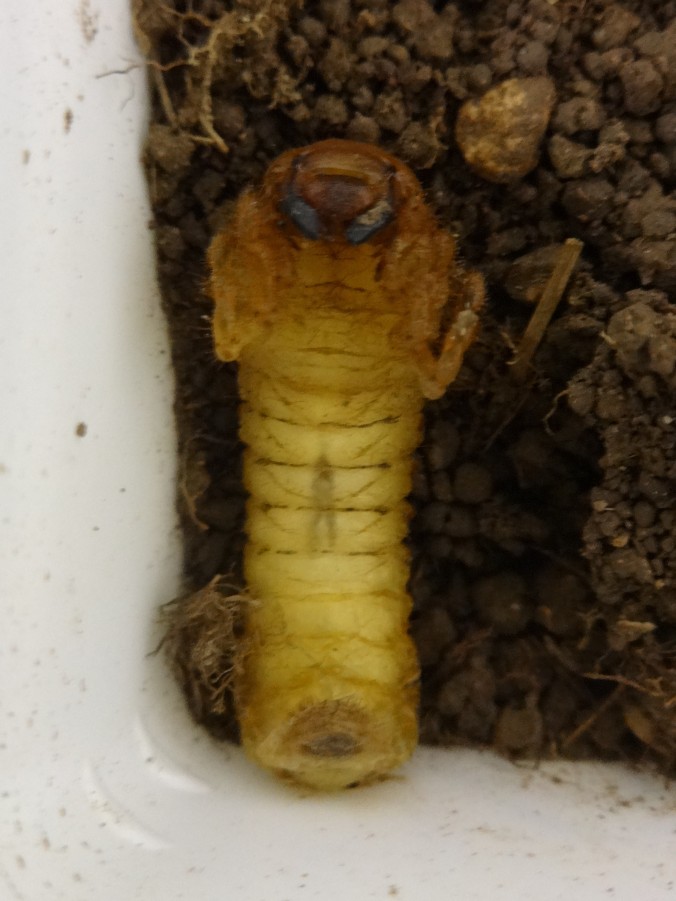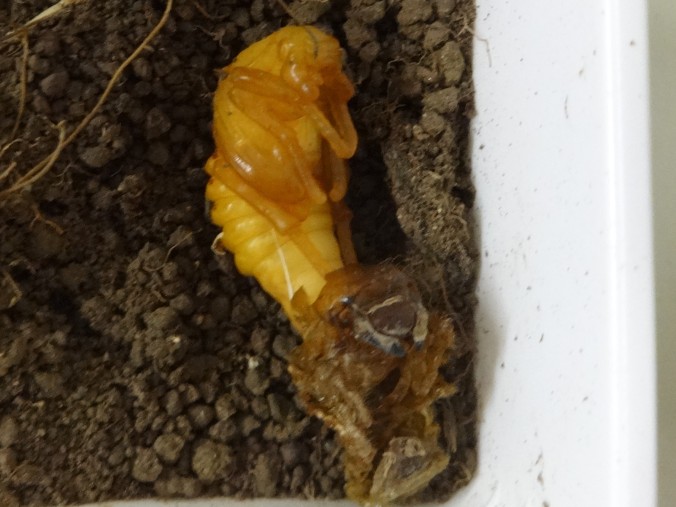In the basement of our research institute, I keep a few living common cockchafer larvae which we had dug out in a pasture in Blaubeuren-Weiler (Germany) in May. The original plan was to use these larvae in an acoustic experiment to learn more about the communication between them. Well as it turned out, the larvae didn’t care about my schedule for the experiment. They had already reached their third and final larval stage when we collected them in the field. This means that in August/September, the larvae should start to pupate to eventually transform into the adult beetles. When food is abundant and soil temperatures are sufficiently warm, larvae can develop much faster and start to pupate earlier. It seems that my common cockchafers feel very much at home in the basement of the institute because that is exactly what happened. The majority of the larvae has already turned into pupae.
A healthy well-fed cockchafer larva is always clean (despite of living in soil), shiny and has a dark butt. The dark colour stems from soil and organic material in the larval gut. You can see its content shimmer through the skin which is transparent at this part of the larval body.

Common cockchafer larva – third larval stage (= third instar)
When the larva starts to pupate, it becomes inactive, stiff and starts to look like a little mummy. The skin becomes very dry and people who are unfamiliar with these animals might just think that the larva is dead.

Common cockchafer larva starting to pupate
To finally change from the larva into a pupa, the animal has to completely shed its skin. In the last picture, you see the final result – a common cockchafer pupa. The animal doesn’t look like an adult beetle (= imago) yet, but already quite different from the original larva. At the bottom of the picture, you can see the shed skin. If you look close enough you can still recognize the shape of the larval head.

Common cockchafer pupa
In our recent publication about the rose chafer – another scarab beetle – we could show that these insects stop emitting methane when they transform from the larva to the pupa. This makes sense because at this stage the insects completely stop feeding. And thus the methane-producing microorganisms living in the gut system of these insects eventually run out of food and their productivity goes down as well.